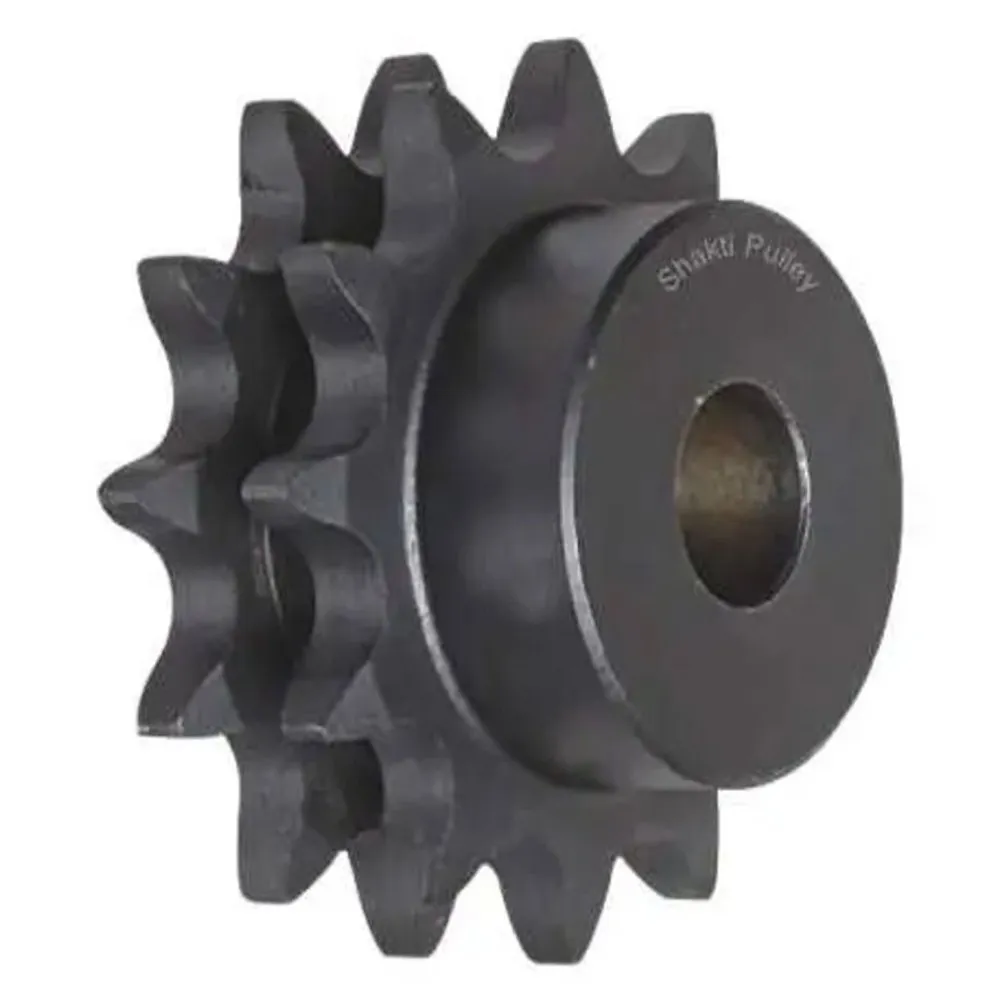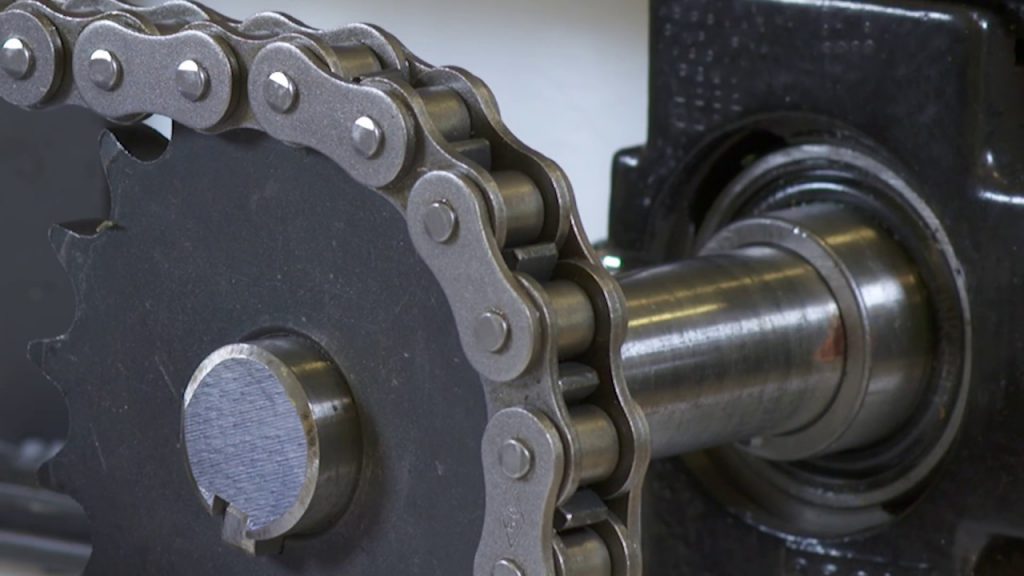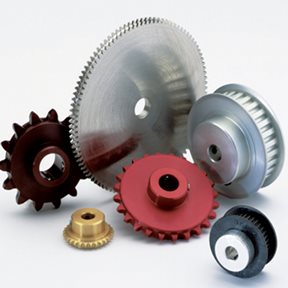Product Description
Molded Synchronous belts and Pulleys GT2 Sprockets timing pulley GT2 belt Pulley Synchronous
1) Warranty: our timing pulley’s quality is very good and with ensurance within 1 year, when you receive the products and find quality problems, we promise you could return it back and free maintenance.
2) Drawings: please send you timing pulleys’ drawings to us to get the best quotation; If you have no drawings, then we could work out CAD drawings and the best quotation to you ASAP.
3) Sample: we accept 1 piece sample’s order, we could do samples until you’re satisfied.
4) Confidentiality agreetment: Strictly adherence to client confidentiality agreetment for timing pulleys.
| Product Description |
|
Product Name |
Timing Belt Pulley | |
| Teeth profile | Trapezoidal toothed | MXL, XXL, XL, L, H, XH, XXH |
| T-toothed | T2.5, T5, T10, T20 | |
| Arc toothed | HTD3M, HTD5M, HTD8M, HTD14M, HTD20M, Gt2, Gt3, Gt5 | |
| S-toothed | S2M, S3M, S4.5M, S5M, S8M, S14M | |
| Parabolic-toothed | P2M, P3M, P5M, P8M, P14M | |
| Y-toothed | G2M, G3M, G5M, Y8M | |
| Teeth Quantity | 10-150 teeth or customized | |
| Inner Bore | 2-200mm H7 precision or customized | |
| Belt width | 4mm, 6mm, 9mm, 10mm, 12mm, 15mm, 20mm, 25mm, 30mm, 40mm, 50mm, 1/4”, 5/16”, 3/8”, 1/2”, 3/4”, 1”, 1.5”, 2”or customized | |
| Accessories | We can provide the service of assembling setscrews, bearings, shafts or taper bush | |
| Surface treatment | Anodize,Black Oxide,Phosphate and Galvanization | |
| Drawing Format | Timing belt pulley cad drawing,timing belt pulley UG drawing,Timing belt Pulley Soliwork drawing,Timing Pulley PDF drawing | |
What is timing pulley?
Timing pulleys are specialized pulleys that have either teeth or pockets around the outside diameter of the pulley body. Timing teeth engage holes in the metal belt, while timing pockets engage drive lugs on a belt’s inner circumference. These teeth or pockets are used only for timing, not for power transmission.
How timing pulleys work?
The synchronous wheel transmission is composed of an endless belt with equal-spaced teeth on the inner peripheral surface and a pulley with corresponding teeth. During operation, the toothed teeth mesh with the tooth grooves of the pulley to transmit motion and power, which is integrated with the belt. A new type of belt drive with the advantages of transmission, chain drive and gear transmission.
What is gt2 timing pulley?
2mm pitch GT2 Pulley. The GT2 or 2GT Tooth Profile timing pulley prevails in the 3d printing hobby cause the Round tooth profile brings high precision of non-backlash, were known as today’s Reprap Pulley.
What is a timing pulley flange?
Timing pulley flanges are used to maintain belt contact with a timing pulley in power transmission applications.Timing pulley flanges are manufactured to fit timing pulleys of the same pitch and size. The dimensions of a pitch, including the mating flange, are specified by the number of grooves.
What are synchronous belts used for?
The trapezoidal tooth profile first used on synchronous belts is recognized as standard. Belts with this configuration are commonly used in machine tools, textile machinery, home appliances, business equipment, and as camshaft drives in engines.
Note:Please confirm you need teeth profile, teeth quantity, belt width, bore diameter, quantity and type (please refer below drawings) to get our the most complete CAD drawings and the best quotation.
Related Products
| Certification: | ISO |
|---|---|
| Pulley Sizes: | Type A |
| Manufacturing Process: | Forging |
| Material: | Iron |
| Surface Treatment: | Baking Paint |
| Application: | Chemical Industry, Grain Transport, Mining Transport, Power Plant |
| Samples: |
US$ 50/Piece
1 Piece(Min.Order) | |
|---|
| Customization: |
Available
| Customized Request |
|---|

Are there different types of sprocket pulleys, and how do they vary in industrial use?
Yes, there are different types of sprocket pulleys, each designed to suit specific industrial applications. Here’s an explanation of the various types and their variations:
1. Standard Sprocket Pulleys: Standard sprocket pulleys are the most common type and are widely used in industrial applications. They typically have a cylindrical shape with evenly spaced teeth and are available in various sizes and materials. Standard sprocket pulleys are used in a wide range of industries, including manufacturing, automotive, agriculture, and machinery.
2. Taper-Lock Sprocket Pulleys: Taper-lock sprocket pulleys have a unique design that allows for easy installation and removal. They feature a tapered bore with a corresponding sprocket hub that can be mounted on a shaft by tightening a set of screws. Taper-lock pulleys provide a secure and reliable connection, making them suitable for applications where frequent pulley changes or maintenance is required.
3. Split Sprocket Pulleys: Split sprocket pulleys are designed with a split hub or a two-piece construction that allows for easy installation or replacement without the need to disassemble the entire system. They are commonly used in applications where access to the shaft or the chain is limited, making maintenance or pulley changes more convenient.
4. Idler Sprocket Pulleys: Idler sprocket pulleys are used to guide or redirect the chain in a chain-driven system. They do not transmit power but help to maintain proper tension and alignment. Idler pulleys are often used in applications with complex paths, multiple sprocket pulleys, or long spans between driving and driven pulleys. They contribute to reducing chain vibration, enhancing system stability, and improving overall performance.
5. Specialty Sprocket Pulleys: Specialty sprocket pulleys are designed for specific applications or unique requirements. They may include custom tooth profiles, non-standard sizes, or specialized materials. Examples of specialty sprocket pulleys include those used in high-temperature environments, food-grade applications, or in industries such as mining, forestry, or marine where they need to withstand harsh conditions.
6. Timing Belt Pulleys: Although not technically sprocket pulleys, timing belt pulleys are worth mentioning as they serve a similar purpose in power transmission systems. Timing belt pulleys have grooves that match the teeth of timing belts, enabling precise motion control and synchronization. They are commonly used in applications that require accurate positioning, such as robotics, CNC machines, and printing presses.
Each type of sprocket pulley offers specific advantages and is selected based on factors such as the application requirements, load conditions, ease of installation, maintenance considerations, and the desired performance of the chain-driven system.

What safety considerations should be taken into account when working with sprocket pulleys?
Working with sprocket pulleys requires careful attention to safety to prevent accidents and injuries. Here are some important safety considerations to keep in mind:
1. Lockout/Tagout Procedures: Before performing any maintenance, inspection, or adjustment on machinery or systems with sprocket pulleys, it is crucial to follow proper lockout/tagout procedures. Lockout/tagout involves isolating the power source, de-energizing the equipment, and securing it with lockout devices and tags to prevent accidental startup. This ensures that sprocket pulleys and associated machinery cannot be unexpectedly activated during maintenance activities.
2. Personal Protective Equipment (PPE): When working with sprocket pulleys, appropriate personal protective equipment (PPE) should be worn. This may include safety glasses or goggles to protect the eyes from flying debris or particles, gloves to prevent hand injuries, and sturdy footwear to protect against foot injuries. The specific PPE requirements may vary depending on the nature of the work environment and associated hazards.
3. Proper Training and Competence: Only trained and competent personnel should work with sprocket pulleys. Adequate training ensures that individuals have the necessary knowledge and skills to operate, maintain, and handle sprocket pulleys safely. Training should cover topics such as proper installation techniques, alignment procedures, tensioning guidelines, and safe maintenance practices.
4. Guarding and Enclosures: Sprocket pulleys should be properly guarded and enclosed to prevent accidental contact with moving parts. Guarding can include physical barriers, such as covers or shields, that prevent access to the sprocket pulleys and the associated chain. This helps protect workers from entanglement, pinch points, or other hazards associated with the rotating sprocket pulleys.
5. Regular Maintenance and Inspection: Implement a regular maintenance and inspection program for sprocket pulleys. This includes routine inspections to identify any signs of wear, damage, or misalignment. Proper lubrication of the chain and sprocket pulleys should also be carried out as per manufacturer recommendations. By addressing maintenance issues promptly, the risk of unexpected failures or accidents can be minimized.
6. Safe Work Practices: Follow safe work practices when working with sprocket pulleys. This includes avoiding loose clothing or accessories that could get caught in the rotating parts, keeping hands and other body parts away from moving sprocket pulleys, and using appropriate tools and equipment for maintenance tasks. It is important to exercise caution and maintain focus to prevent accidents.
7. Risk Assessment: Conduct a thorough risk assessment of the machinery or system incorporating sprocket pulleys. Identify potential hazards associated with the sprocket pulleys, such as pinch points, shearing points, or flying debris, and implement appropriate control measures to mitigate these risks. Regularly review and update the risk assessment as needed.
Paying attention to these safety considerations when working with sprocket pulleys helps create a safer work environment and reduces the risk of accidents or injuries.

Can you explain the primary functions and applications of sprocket pulleys?
Sprocket pulleys serve several primary functions and find applications in various industries. Here’s an explanation of their primary functions and applications:
1. Power Transmission: The main function of sprocket pulleys is to transmit power from one component to another. By engaging with a chain or timing belt, the sprocket pulley transfers torque and rotational motion, allowing the power to be transmitted to different parts of a system or machinery.
2. Accurate Speed and Torque Transfer: Sprocket pulleys are designed to ensure accurate and efficient speed and torque transfer. The teeth on the sprocket pulley mesh with the links of the chain or timing belt, providing a positive engagement that minimizes slippage and ensures precise power transmission.
3. High-Speed and Heavy-Duty Applications: Sprocket pulleys are commonly used in applications that require high-speed or heavy-duty operations. They are capable of handling substantial speeds and transmitting significant torque, making them suitable for demanding industrial machinery, automotive engines, conveyors, and other systems that require reliable power transfer under demanding conditions.
4. Positioning and Timing: In applications where precise positioning or timing is critical, sprocket pulleys play a crucial role. They are often used in conjunction with timing belts to synchronize the movement of different components, ensuring accurate timing and coordination in systems such as engines, robotics, printing presses, and automated manufacturing lines.
5. Conveyor Systems: Sprocket pulleys are extensively used in conveyor systems, where they help drive and guide the movement of the conveyor belt. The positive engagement between the sprocket pulley and the conveyor chain ensures reliable and efficient power transmission, allowing for the smooth movement of materials in industries such as manufacturing, distribution, and logistics.
6. Bicycles and Motorcycles: Sprocket pulleys are an essential component in bicycles and motorcycles. They are used in the drivetrain system to transfer power from the pedals or engine to the wheels. The sprocket pulleys, along with the chain, enable efficient power transfer and allow for gear shifting to adjust the speed and torque required for different riding conditions.
7. Other Applications: Sprocket pulleys find applications in various other industries and machinery. They are used in agricultural equipment, construction machinery, printing machines, packaging systems, and many more applications that require reliable power transmission and precise motion control.
Overall, the primary functions of sprocket pulleys include power transmission, accurate speed and torque transfer, positioning and timing, and their applications span across industries such as manufacturing, automotive, robotics, and transportation.


editor by CX
2023-10-04
